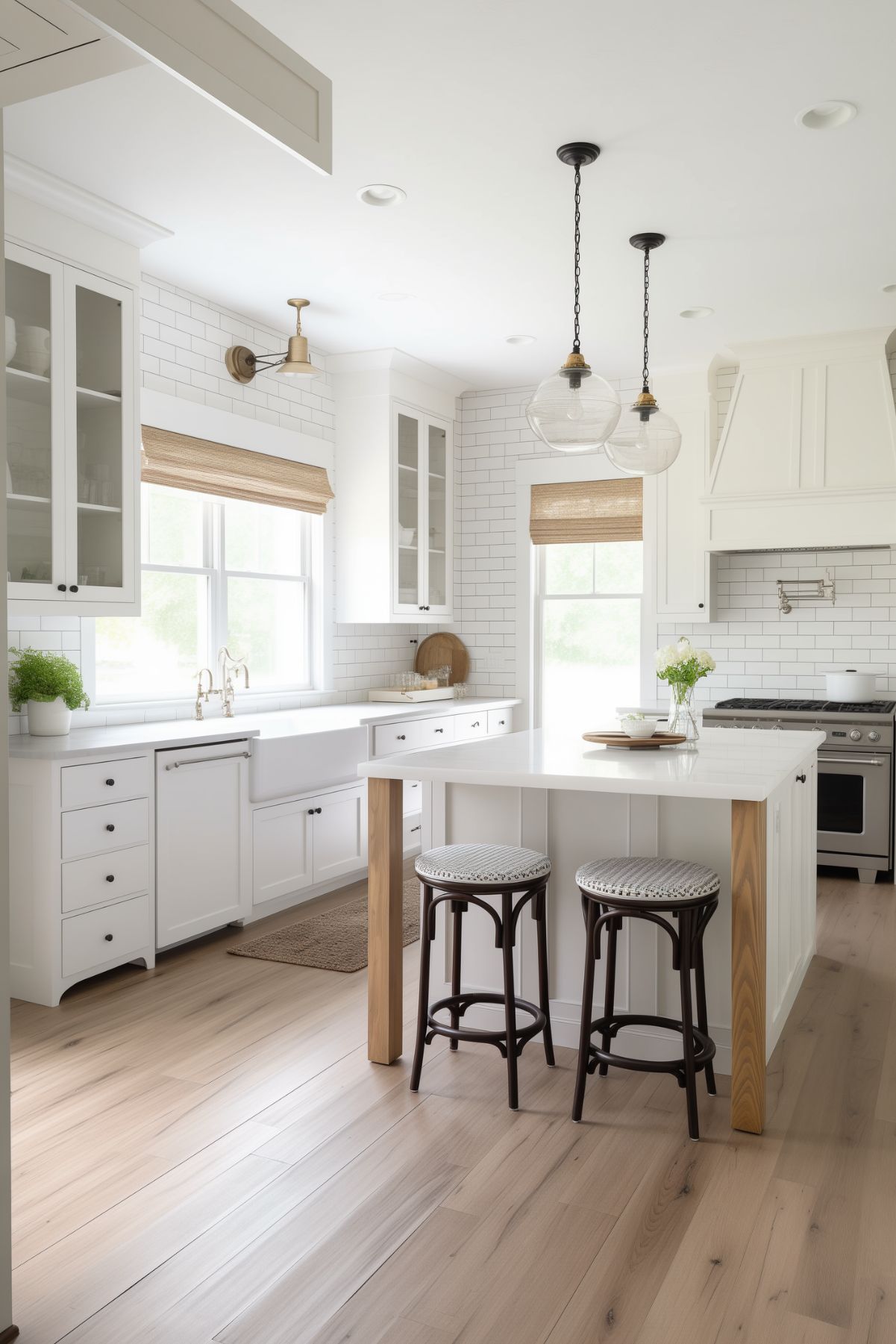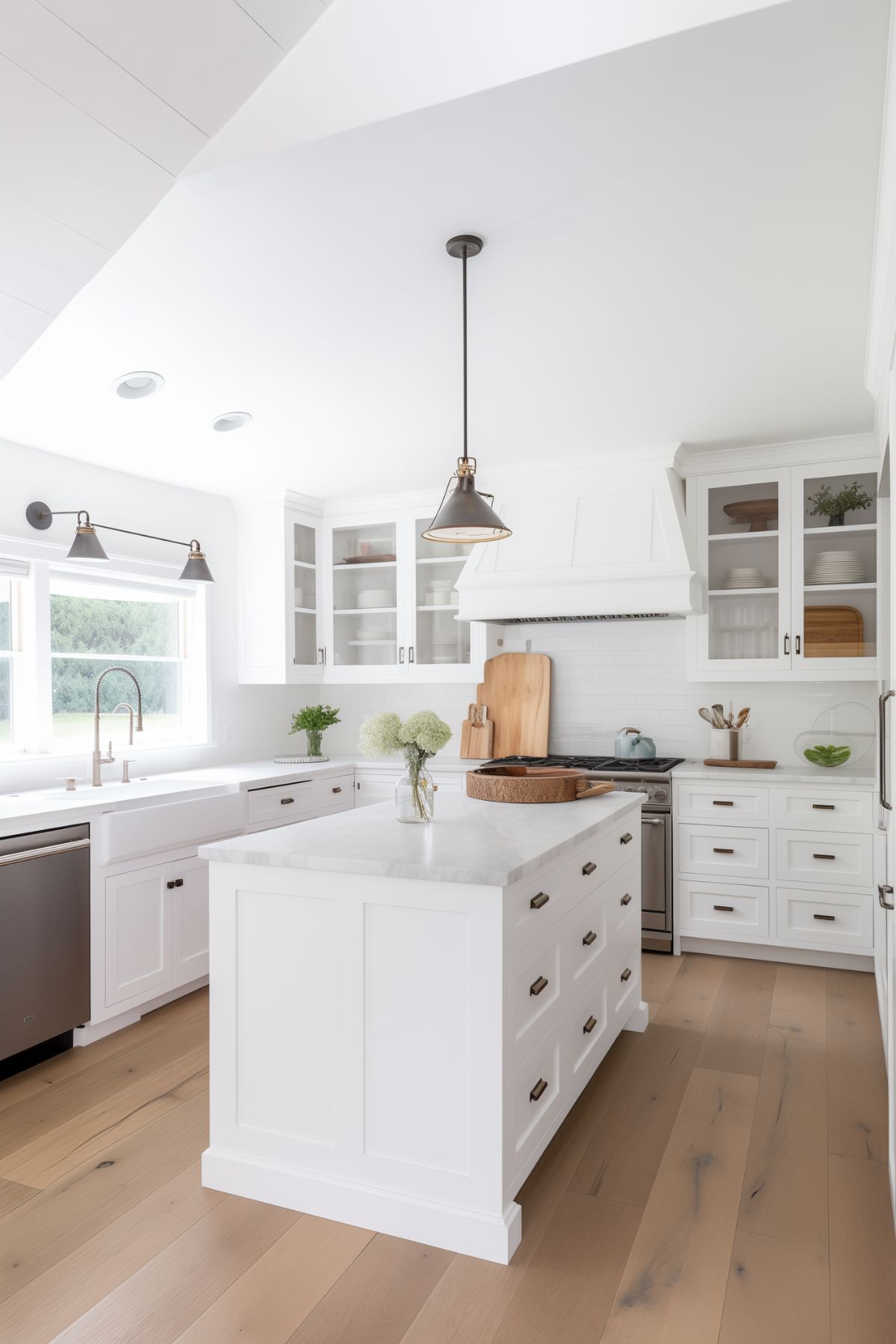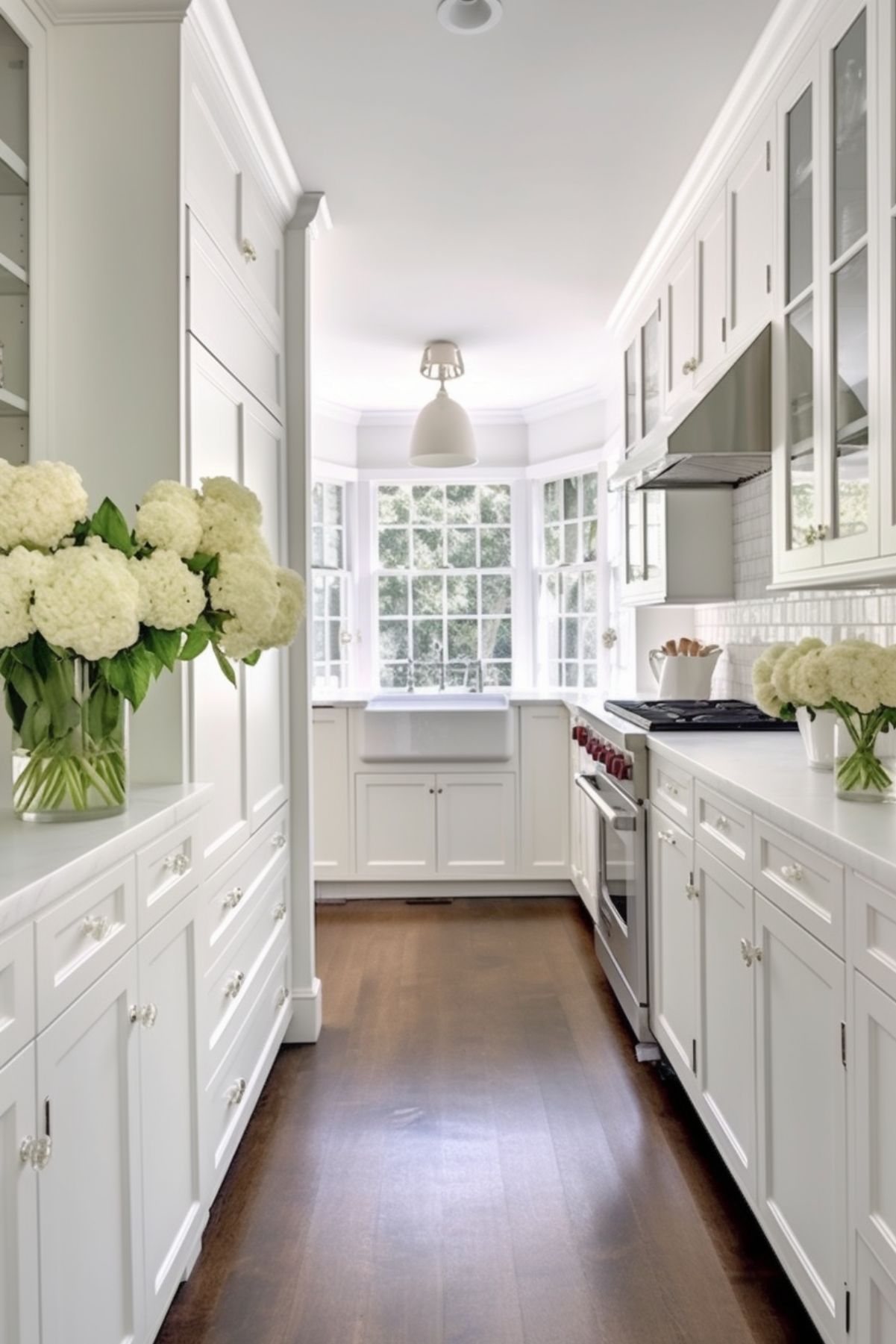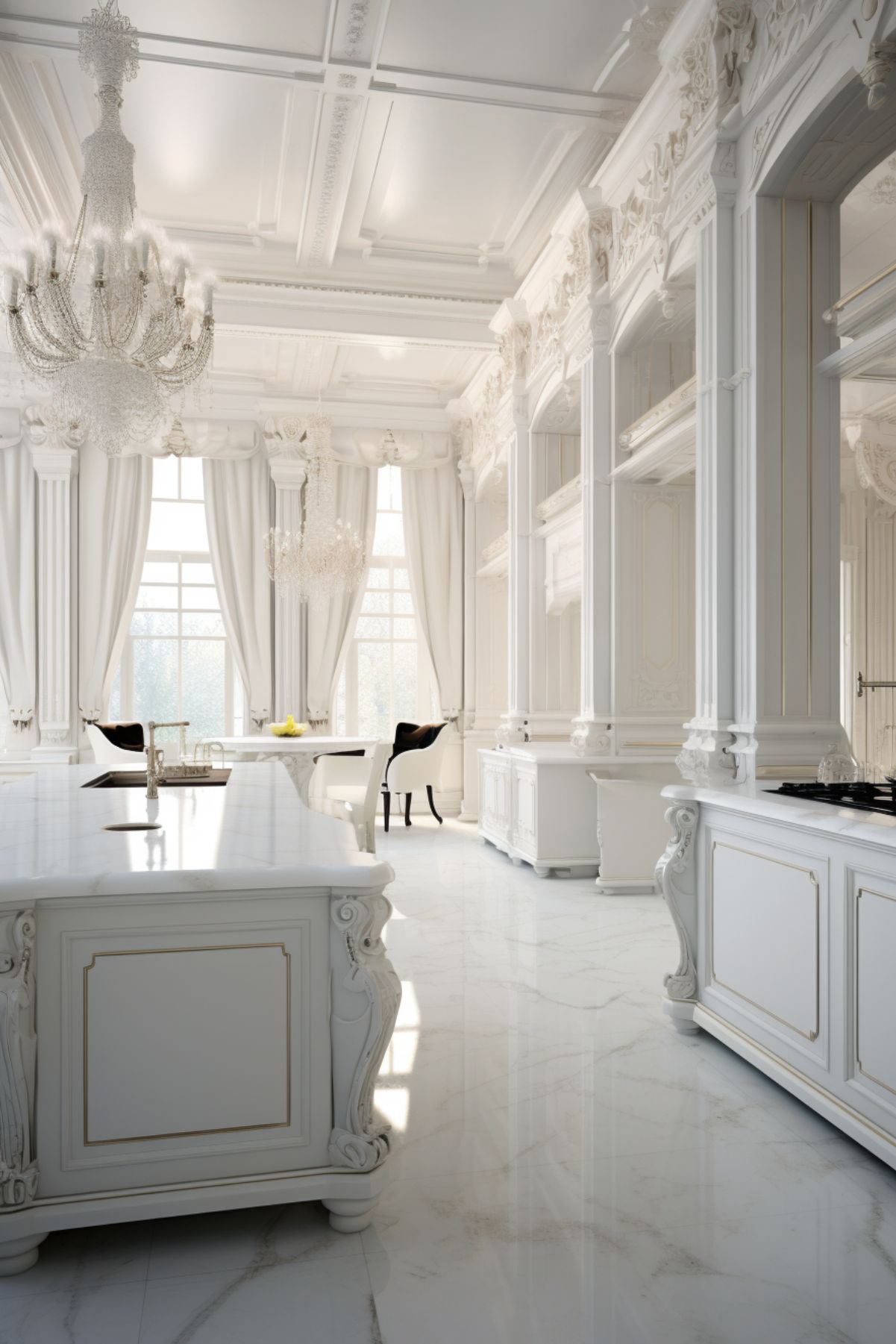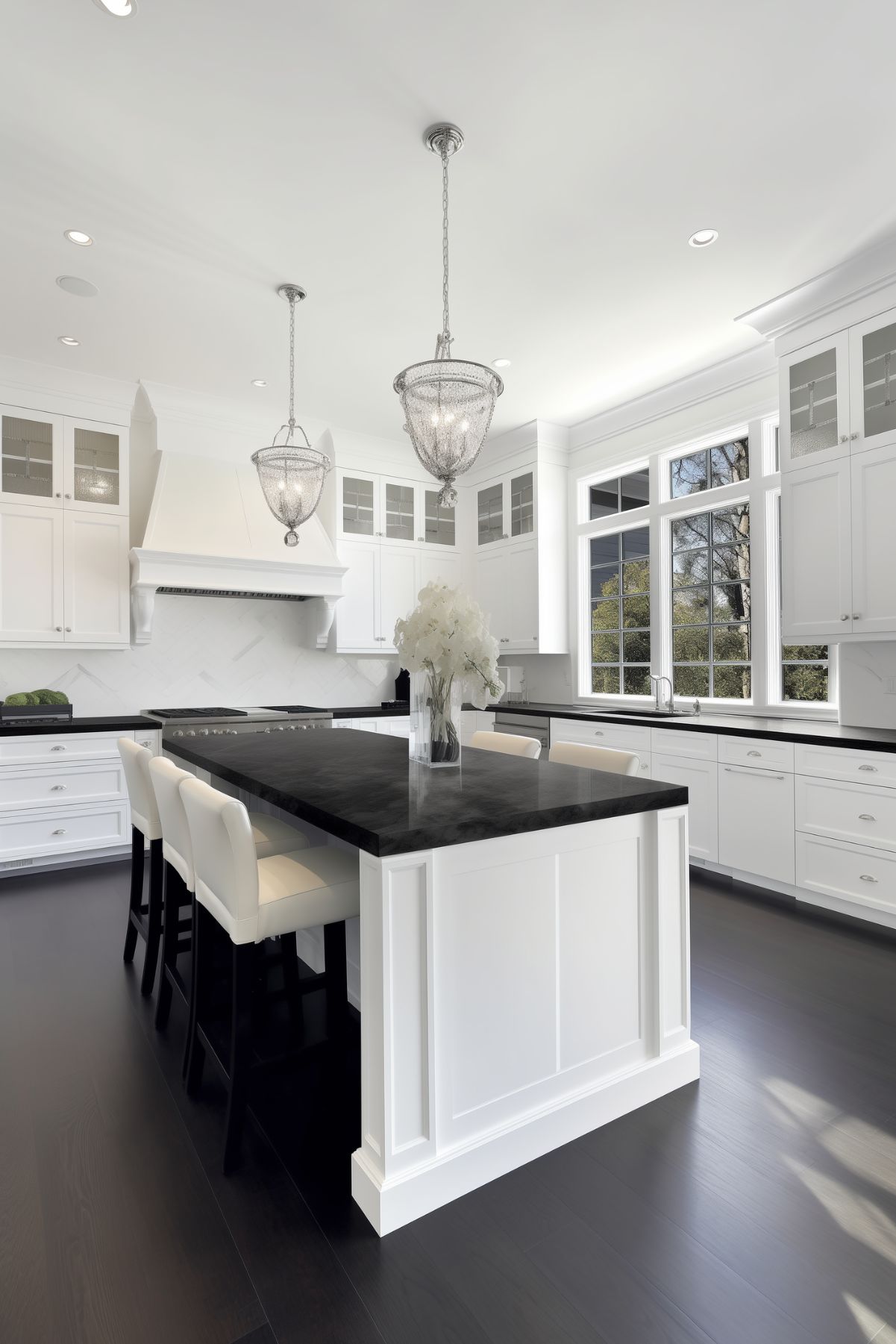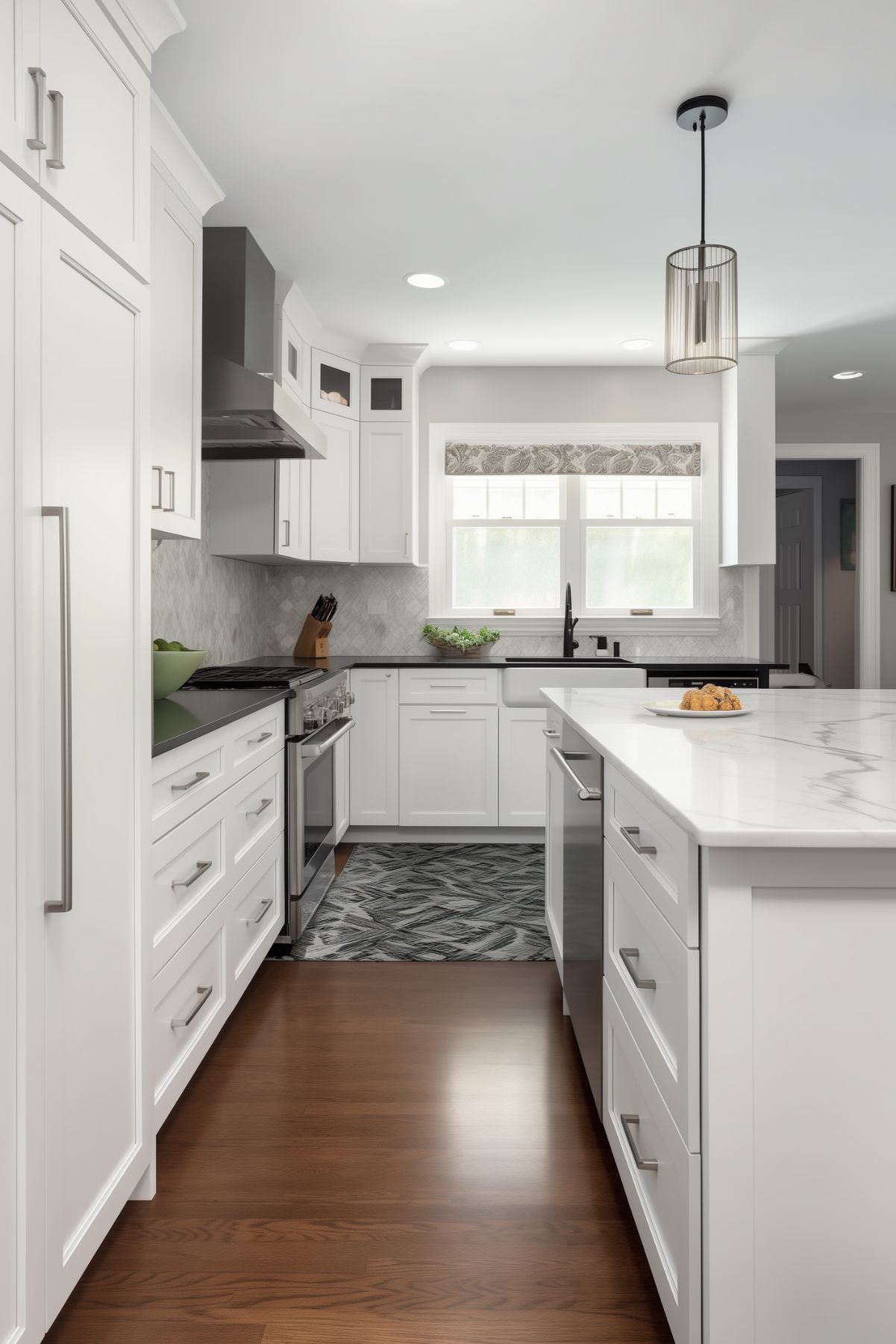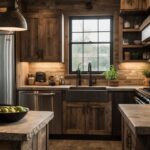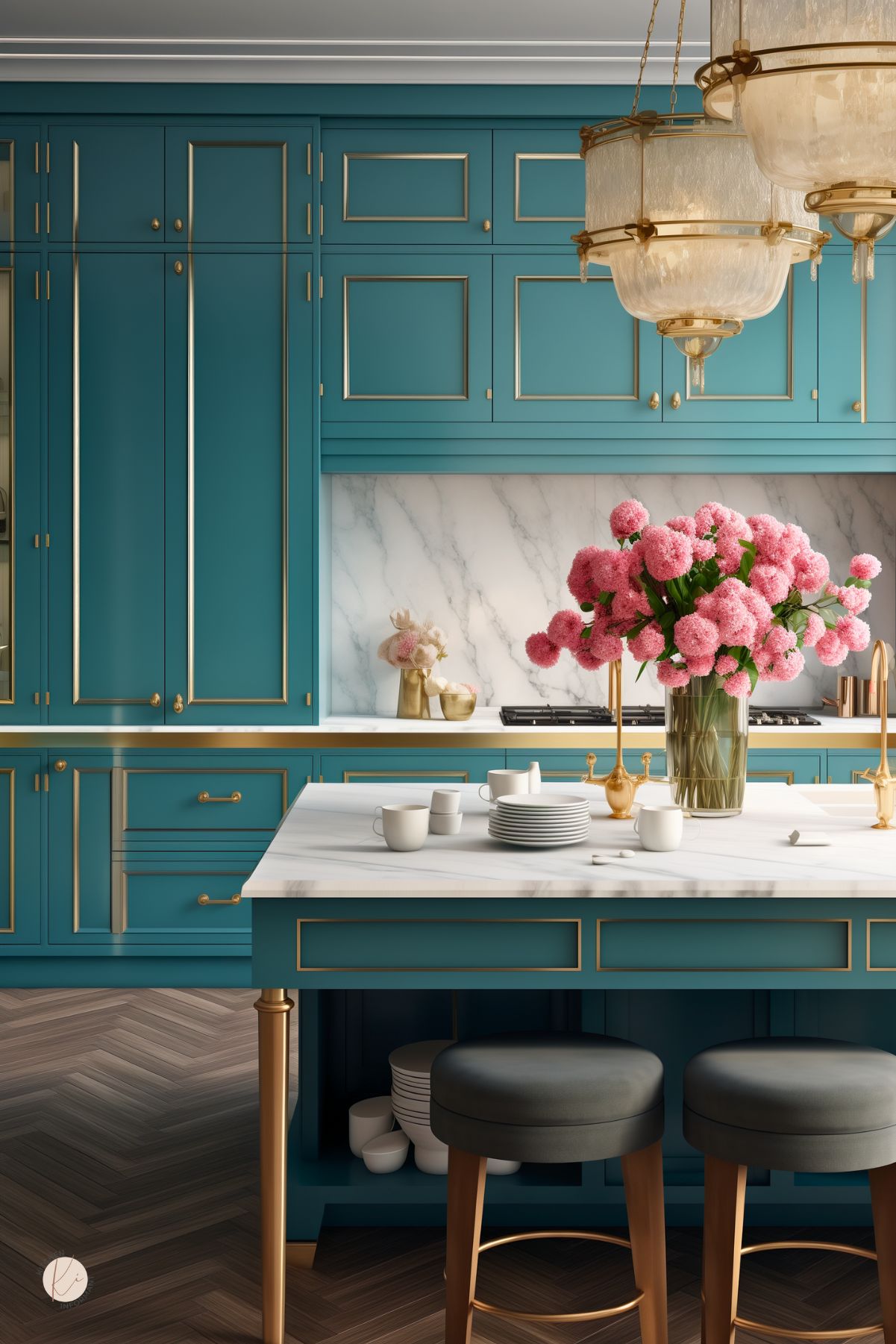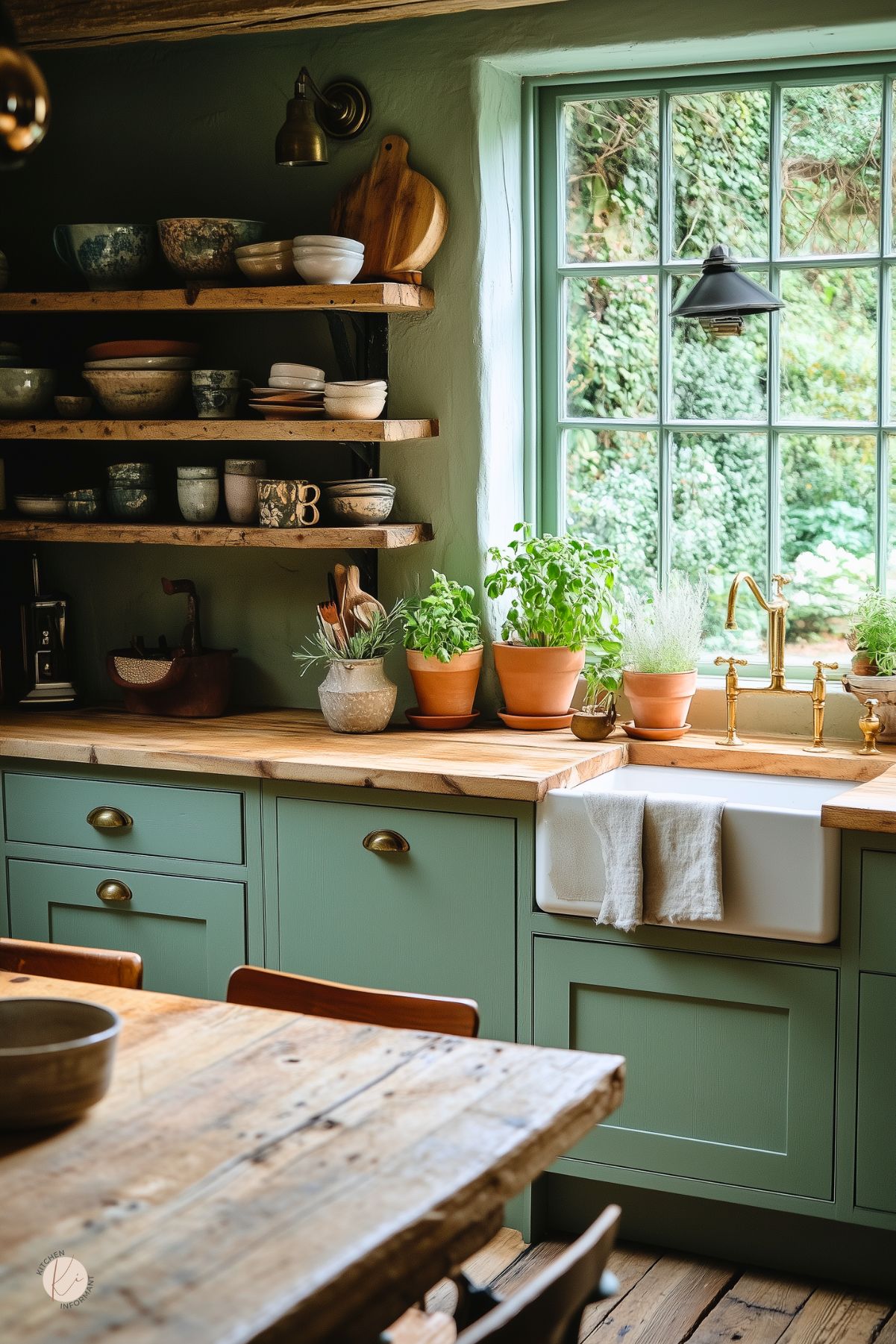White kitchens are a popular choice for homeowners and designers alike. They offer a timeless and classic look that can be paired with a variety of design styles.
White kitchens are also known for their ability to make a space feel bright, open, and clean.

One of the benefits of a white kitchen is its versatility. It can be paired with a variety of materials and colors to achieve different looks.
For example, a white kitchen with natural wood accents can create a warm and inviting atmosphere, while a white kitchen with stainless steel appliances and sleek countertops can give off a modern and minimalist vibe.
Another advantage of a white kitchen is its ability to make a space feel larger and more open.
The bright and reflective surfaces of white cabinetry and countertops can reflect light and make a room feel brighter and more spacious.
This can be especially beneficial in smaller kitchens or those with limited natural light.

The Appeal of White Kitchens
White kitchens have been a popular design choice for many years, and their popularity continues to grow. There are several reasons why white kitchens are so appealing to homeowners.
Clean and Bright Aesthetic
One of the main reasons why white kitchens are so popular is their clean and bright aesthetic.
White cabinets, countertops, and backsplashes reflect light, making the space feel open and airy.
This can be particularly beneficial in small kitchens, where white can make the space feel larger.
Timeless Style
Another reason why white kitchens are so appealing is that they are a timeless design choice. Unlike trendy colors or patterns, white kitchens never go out of style.
This means that homeowners can feel confident that their kitchen will look great for years to come.
Versatility
White is a versatile color that can be paired with almost any other color or design style.
This means that homeowners can easily change the look of their kitchen by simply changing the accessories or decor.
White kitchens also provide a neutral backdrop for showcasing artwork or other decorative items.
Easy to Clean
White kitchens are often thought to be difficult to keep clean, but this is not necessarily true.
In fact, white cabinets and countertops can be easier to clean than darker colors, as dirt and stains are more visible on darker surfaces.
Additionally, many modern materials used in white kitchens are easy to clean and maintain.
Designing Your White Kitchen
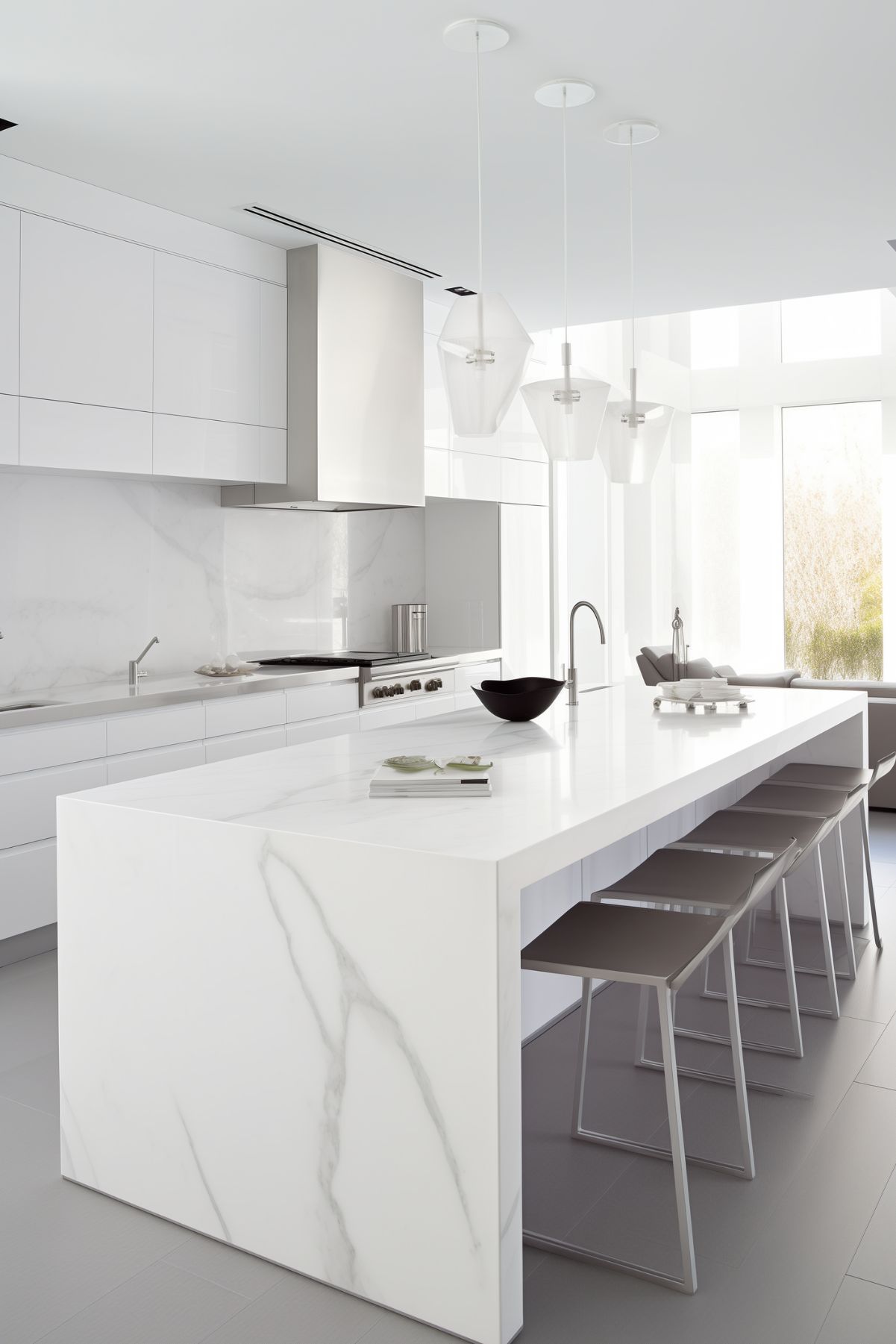
When designing a white kitchen, there are several factors to consider to ensure that the space is both functional and aesthetically pleasing.
From choosing the right shade of white to selecting contrasting colors and accents, the design decisions you make can have a significant impact on the overall look and feel of your kitchen.
Choosing the Right Shade of White
One of the first decisions to make when designing a white kitchen is choosing the right shade of white.
While white may seem like a straightforward color, there are actually many different shades to choose from, each with its own unique undertones and characteristics.
Some popular shades of white for kitchens include pure white, off-white, and ivory.
When selecting a shade of white for your kitchen, it’s important to consider the other colors and finishes in the space.
For example, if you have stainless steel appliances, you may want to choose a cooler shade of white to complement them. On the other hand, if you have warm wood finishes, an off-white or ivory shade may be a better choice.
Contrasting Colors and Accents
While white is a classic and timeless color for kitchens, it can also be somewhat plain and boring on its own.
To add interest and depth to your white kitchen, consider incorporating contrasting colors and accents.
This can be done through the use of colorful backsplashes, patterned tiles, or even colorful appliances.
When selecting contrasting colors and accents for your white kitchen, make sure to choose colors that complement rather than clash with your white color scheme.
Some popular colors that work well with white include navy blue, black, and shades of gray.
Materials and Finishes
The materials and finishes you choose for your white kitchen can also have a significant impact on the overall look and feel of the space.
For example, if you want a modern and sleek look, you may want to choose materials like stainless steel, glass, and polished concrete.
On the other hand, if you prefer a more traditional look, materials like wood, marble, and ceramic tile may be a better choice.
When selecting materials and finishes for your white kitchen, make sure to consider both aesthetics and functionality.
For example, while a marble countertop may look beautiful, it may not be the most practical choice for a busy family kitchen.
Lighting Considerations
Finally, lighting is an important consideration when designing a white kitchen.
Since white reflects light, it’s important to ensure that your kitchen is well-lit to avoid a washed-out or sterile look.
Consider incorporating a mix of task lighting, ambient lighting, and accent lighting to create a warm and inviting atmosphere.
When selecting lighting for your white kitchen, make sure to consider both form and function.
For example, while a statement pendant light may look beautiful, it may not provide enough task lighting for food prep and cooking.
Countertops and Backsplashes
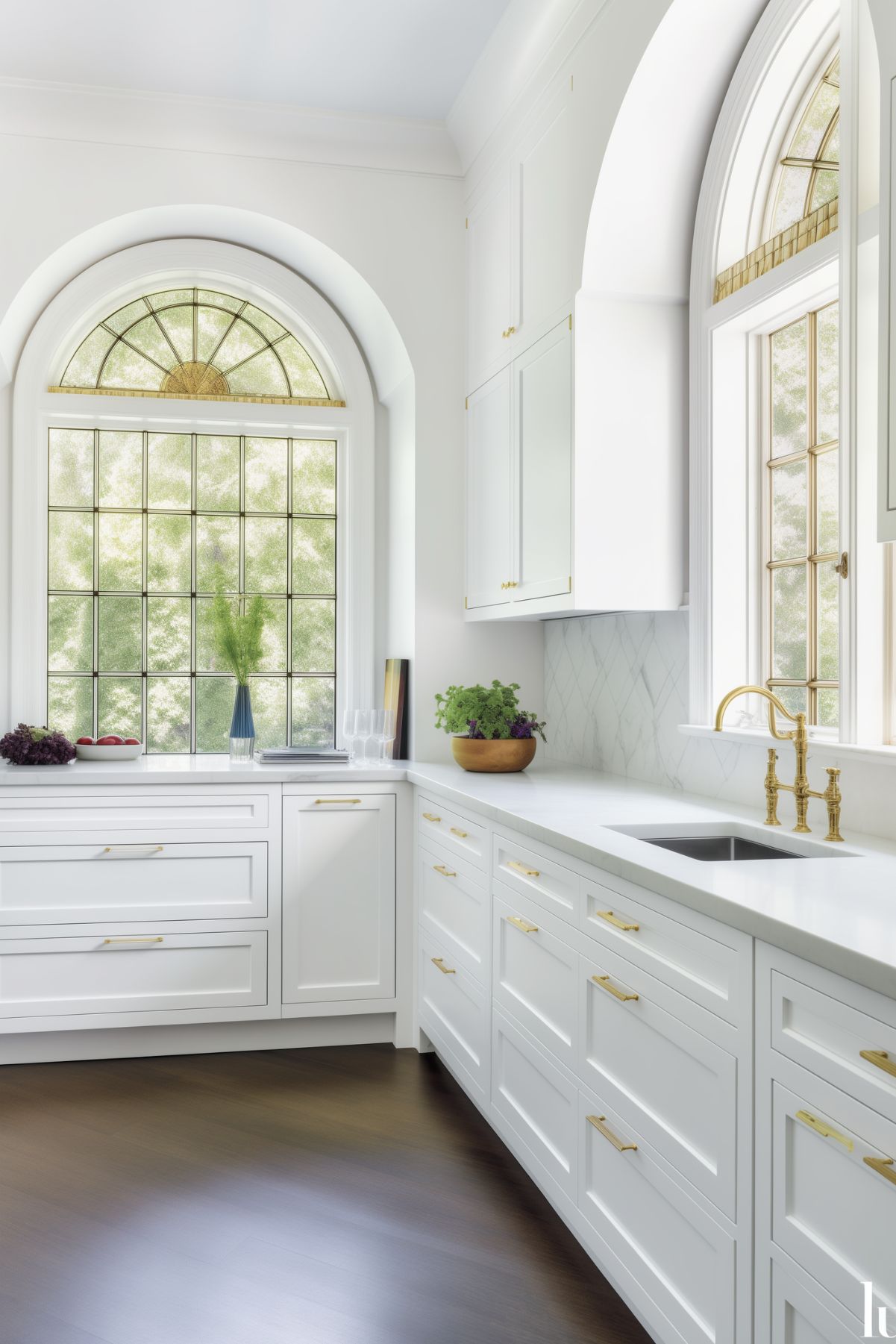
Material Options
When it comes to choosing countertops and backsplashes for a white kitchen, there are a variety of material options available.
Some popular choices for countertops include granite, marble, quartz, and butcher block. Each of these materials has its own unique characteristics and benefits.
For example, granite is known for its durability and resistance to heat and scratches, while marble has a classic and elegant look. Quartz is a low-maintenance option that is stain-resistant and easy to clean, and butcher block provides a warm and natural feel.
For backsplashes, some popular materials include ceramic tile, glass tile, and natural stone.
Ceramic tile is a cost-effective option that comes in a variety of colors and patterns, while glass tile can add a modern and sleek look. Natural stone, such as marble or travertine, can add texture and depth to the kitchen design.
Color and Pattern Choices
When choosing colors and patterns for countertops and backsplashes in a white kitchen, the options are endless.
For countertops, some popular choices include white or light-colored granite or quartz with subtle veining or speckles, or a classic marble with gray veining. Butcher block countertops can add warmth and texture to the space.
For backsplashes, white subway tile is a classic choice that can add a timeless look to the kitchen.
For a more modern look, glass tile in a bold color or pattern can make a statement. Natural stone backsplashes can add texture and interest to the design.
Overall, choosing the right countertops and backsplashes for a white kitchen can help tie the design together and create a cohesive look.
By considering material options and color and pattern choices, homeowners can create a kitchen that is both functional and stylish.
Cabinetry and Hardware

Cabinet Styles
White cabinetry is a timeless and versatile choice for any kitchen. There are several styles of white cabinets to choose from, including:
- Shaker Style Cabinets: Shaker cabinets are a popular choice for white kitchens. They have a simple, clean design with recessed panel doors and minimal adornment. Shaker cabinets are known for their durability and can be paired with a variety of hardware styles.
- Flat Panel Cabinets: Flat panel cabinets have a sleek and modern look with a flat center panel and no raised or recessed features. They are a great option for those who prefer a minimalist aesthetic.
- Glass-Front Cabinets: Glass-front cabinets are a stylish way to display dishware and other kitchen items. They come in a variety of styles, including clear, frosted, and textured glass.
Hardware Selection
Choosing the right hardware for white cabinets can be a daunting task. The hardware you choose can make a big impact on the overall look and feel of your kitchen.
Here are some popular hardware options for white cabinets:
- Brushed Nickel: Brushed nickel hardware is a classic choice for white cabinets. It has a subtle sheen that complements the clean lines of white cabinetry.
- Chrome: Chrome hardware is a popular choice for modern kitchens. It has a bright and shiny finish that adds a touch of glamour to white cabinets.
- Black: Black hardware is a bold and dramatic choice for white cabinets. It creates a striking contrast that can make a statement in any kitchen.
When selecting hardware for white cabinets, make sure to consider the tone of the white.
According to The Spruce, warmer-toned cabinets pair well with polished nickel or antique brass hardware, while cooler-toned cabinets look great with polished chrome, brushed chrome, and black hardware.
Appliances and Fixtures

Integrating Appliances
When creating a cohesive look in a white kitchen, integrating appliances is key.
Stainless steel appliances can be a popular choice, but there are other options available that can blend in seamlessly with white cabinetry.
For example, white appliances can create a clean and cohesive look that complements the rest of the kitchen.
Another option is to use panel-ready appliances, which can be customized to match the cabinetry.
This allows appliances, such as refrigerators and dishwashers, to blend in with the rest of the kitchen and not disrupt the flow of the design.
Sink and Faucet Styles
The sink and faucet can also play a role in the overall look of a white kitchen.
There are a variety of sink materials available, including stainless steel, porcelain, and composite materials.
Consider the overall style of the kitchen when choosing a sink material. For example, a farmhouse sink can add a traditional touch to a white kitchen, while a sleek stainless steel sink can complement a modern design.
When it comes to faucet styles, there are also a variety of options available.
A classic chrome faucet can add a timeless touch to a white kitchen, while a matte black faucet can create a bold and modern look.
Make sure to choose a faucet that not only complements the style of the kitchen, but also functions well for the needs of the homeowner.
Flooring Solutions

Flooring Types
When it comes to choosing the right flooring for a white kitchen, there are many options available.
Some popular choices include hardwood, linoleum, vinyl, natural stone, and ceramic tile.
Each material has its own unique advantages and disadvantages, so it’s important to consider factors such as durability, maintenance, and cost.
Hardwood flooring is a classic choice for any kitchen. It provides a warm and inviting feel, and can be sanded and refinished to maintain its appearance.
However, it is susceptible to water damage and can be expensive to install.
Linoleum and vinyl flooring are affordable and easy to maintain. They come in a variety of colors and patterns, making it easy to find a style that complements your white kitchen.
However, they can be prone to scratches and dents, and may need to be replaced more frequently than other materials.
Natural stone, such as marble or granite, can add a luxurious touch to your white kitchen.
It is durable and long-lasting, but can be expensive and may require regular maintenance to prevent staining.
Ceramic tile is a practical choice for a white kitchen. It is durable, easy to clean, and comes in a variety of styles and colors.
However, it can be cold and hard underfoot, and may require professional installation.
Color Coordination
When choosing flooring for a white kitchen, it’s important to consider how it will coordinate with other elements in the room.
For example, if you have white cabinets and countertops, you may want to choose a flooring material that adds some contrast, such as a dark wood or tile with a pattern.
On the other hand, if you want to create a cohesive look, you can choose a flooring material that matches the color of your cabinets or countertops. This can create a clean and modern aesthetic.
Another option is to choose a flooring material that complements the color of your walls or backsplash.
For example, if you have a blue backsplash, you may want to choose a flooring material with blue undertones to tie the room together.
Overall, there are many flooring solutions available for a white kitchen.
By considering factors such as durability, maintenance, and color coordination, you can choose a material that meets your needs and complements your design style.
Decorating White Kitchens

When it comes to decorating white kitchens, there are several ways to add interest and personality to the space. Here are some ideas to get started:
Wall Decor and Art
One way to add visual interest to a white kitchen is by incorporating wall decor and art.
This can include anything from framed prints and paintings to decorative plates and sculptures.
Hanging a gallery wall of black and white photos or colorful artwork can add a pop of color and texture to the space.
Additionally, incorporating open shelving can provide a platform to display decorative items and add character to the room.
Adding Greenery
Another way to add life to a white kitchen is by incorporating plants and greenery.
Potted herbs, succulents, and flowers can add a touch of nature and color to the space.
Hanging planters or a large potted plant can also add visual interest and provide a focal point in the room.
Not only do plants add aesthetic value, but they also have the added benefit of improving air quality and reducing stress levels.
Textiles and Rugs
Adding textiles and rugs to a white kitchen can help to soften the space and add warmth.
Incorporating a colorful rug or runner can add texture and pattern to the room.
Additionally, adding patterned or textured dish towels, curtains, and seat cushions can provide a pop of color and personality to the space.
Using natural materials such as woven baskets and wood cutting boards can also add warmth and texture to the room.
Overall, decorating a white kitchen can be a fun and creative process.
By incorporating wall decor and art, greenery, and textiles and rugs, homeowners can add personality and interest to their space.
